
Here is a helpful list that I wish I had written because I agree with every point. From leezasplace.org.
Before undertaking any effort in life, such as these Ten Commandments, always know that perfection is a false goal. Perfection in caregiving should be avoided at all times. These Ten Commandments are not for perfectionists and are created only for caregivers committed to the concept of “doing your best, no more nor less.”
I.: Take The Oxygen First
As the FAA says, when the plane gets into trouble and the life saving equipment falls from the upper compartment, you take the oxygen first and then give it to your child. With only 19 seconds of useful consciousness in such a situation this approach gives both of you a chance of survival. Caregiving is no different.
At its base, caregiving is an experience of confusion, challenge and mixed emotions. Love for your family member and the satisfaction you derive from helping
may create a situation where one sacrifices their lives at the “alter of caregiving.” That sacrifice gives rise to conflicting emotions such as guilt, stress, anxiety and a host of other mental health challenges. It is imperative as a caregiver to take care of one’s own mind, body and soul by taking the oxygen first.
Yes, that's me in the photo. I keep this photo posted in my bathroom as a reminder to take care of myself.
II.: Never Assume
Caregivers are no different than others in that we tend to make assumptions about other people and situations before actually having gathered all of the neede information. In fact, when we make an assumption we are really passing judgment without even realizing it. How often do we assume that our loved one knows what we know, or knows what we need or desire to have happen, when if fact we are not all psychic? The result of this is often misplaced anger or resentment. Let’s make a sincere effort to garner all the details before we make assumptions.
III.: Have Ongoing Family Conferences
Roles and responsibilities are extremely important to explain to all involved. Ongoing family conferences maintain the boundaries necessary to the caregiving process so that no one feels out of control or inadequate. This is a vital and should be done in person and as frequently as needed. Family conferences are like tuneups used to maintain the family car. This car needs to drive well, efficiently and for a long time. Schedule these conferences regularly, before the wheels fall off.
IV.: Do Not Isolate
Social isolation can detach and separate a caregiver and give rise to a wide variety of stresses for those taking care of a loved one. Isolation is dangerous because it cuts off family members from outside help and support they need to cope with the stresses of caregiving. Isolation makes it harder for outsiders to see and intervene in a volatile situation. Support groups help caregivers feel less isolated creating strong bonds of assistance and friendship. Participating in a support group helps caregivers manage stress by sharing their experiences and helping to improve caregiver> skills. It may also help you to face that some problems> have no solutions and that accepting the situation is reality. Join a Caregiver Support Group today.
I recognize my tendency for isolating too much.
V.: Do Not Take Anything Personally
Taking things personally is about self-importance, “the maximum expression of selfishness,” where we assume everything is about “me.” As a famous author once said, “Nothing other people do is because of you. It is because of themselves.” The actual words said by your loved one are not what is hurting you; it is that you have wounds that are touched by what was said.
VI.: Plan Ahead/Make Contingency Plans
Murphy's Law is a popular adage in our culture which broadly states that things will go wrong in any given situation. In American culture the law was named after an engineer working for a brief time on USA rocket sled experiments. No doubt if you are a caregiver than Plan A needs to be made but has to be followed up by Plan B, a contingency plan. Recognize what you can and cannot do, define your priorities, and act accordingly. Turn to other people for help - your family, friends, and neighbors. Prepare clear written list of tasks for anyone who may offer assistance. Planning ahead is vital as it gets all on the same page, allows your loved one to feel safe and to have continuity, lessening their anxiety. What if I go before my loved one does? The answer is plan ahead!
This step is so important that it is the first chapter of my book.
VII. Do Not Fall Prey To Shame & Stigma
Shame and stigma have tragic consequences. Caregivers with mental health challenges fail to see help for themselves because of the shame associated with their condition. As a result of this feeling many think they will experience some form of discrimination, whether in the workplace, from health insurance plans or in social settings. They must get help for their behavioral issues in the same manner they would get help for any other other medical condition. Though a loved one is surrounded by medical and behavioral complications at all times, matters get much worse if the caregiver represses their own mental health issues and keeps it in a closet. There is a high need for ongoing assessments for depression, anxiety, fear, alcohol usage and many other challenges. Often shame and stigma prevent vital access to in-depth evaluation of those on the caregiving path. There is no biochemical difference between a disease of the brain and a disease of the heart.
VIII: Use Community Resources
A full complement of support services that address the caregiver and the recently diagnosed exists in every community. The quality and the extent of such a continuum of resources may vary but just know that neither a caregiver nor their loved one has to be alone. Supportive services may include medical, behavioral, legal, dental and various psycho-educational support groups Investigate community resources that might be helpful. If there is a Leeza’s Place in your community, consult a Leeza Care Advocate or attend meetings and ask other caregivers for the resources that have helped them. If there is not a Leeza’s Place in your community try our Caregiver Connection Line.
IX: Honor Sacred Memories
Empower yourself and your family using experiential approaches to memories. Take time to “remember.” Get away from it all while relaxing with yourself and your loved ones. Use photography journaling, scrapbooking, holiday decorations or any other means to associate with the endearing “stories” of the family. If there is a Leeza’s Place near you, make sure you schedule time for LMTV, Leeza’s Memory Television. The caregiver and the care receiver can find common and connective ground in the face of the best and worst of times. Making sure that all members of the family are included is vital in this process. This is a great time to bring children into the process of honoring their elders and allows loved ones to connect in a valuable way. Keeping what emerges out of such a dynamic process is a great way to honor sacred memories and bridge the generations.
COMMANDMENT X: Find Humor In Many Places“Laughter Is the Best Medicine.” This is an old expression popularized by Norman Cousin’s book “Anatomy of an Illness,” in which he describes his battle with cancer and how he “laughed” his way to recovery. His hypothesis and the subject of many studies suggest that there are positive effects to be gained from laughter as a great tension-releaser, pain reducer, breathing improver, and general elevator of moods. It sounds miraculous, is not proven, but studies continue. In short, humor therapy is valuable and it helps us through difficult or stressful times. Try to see the humor in being a caregiver. Try writing on a card “Have you laughed with your loved one today?” and placing it in a conspicuous place in the bathroom or kitchen. Read funny books or jokes, listen to funny tapes or watch humorous movies or videos that make you laugh. Try it and you’ll like it!
I often advise my friends to watch the comedy channel frequently!










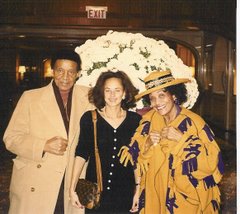
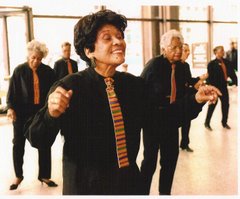
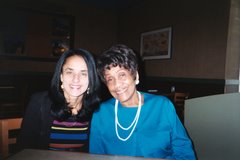
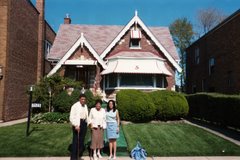
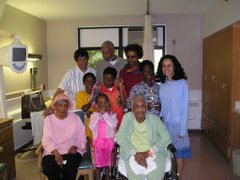

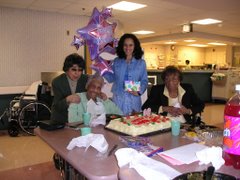
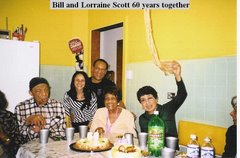
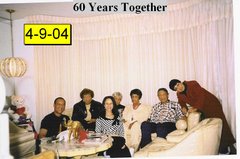
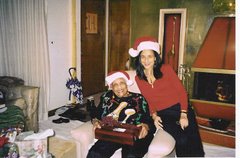
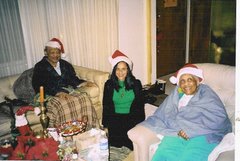
.jpg)